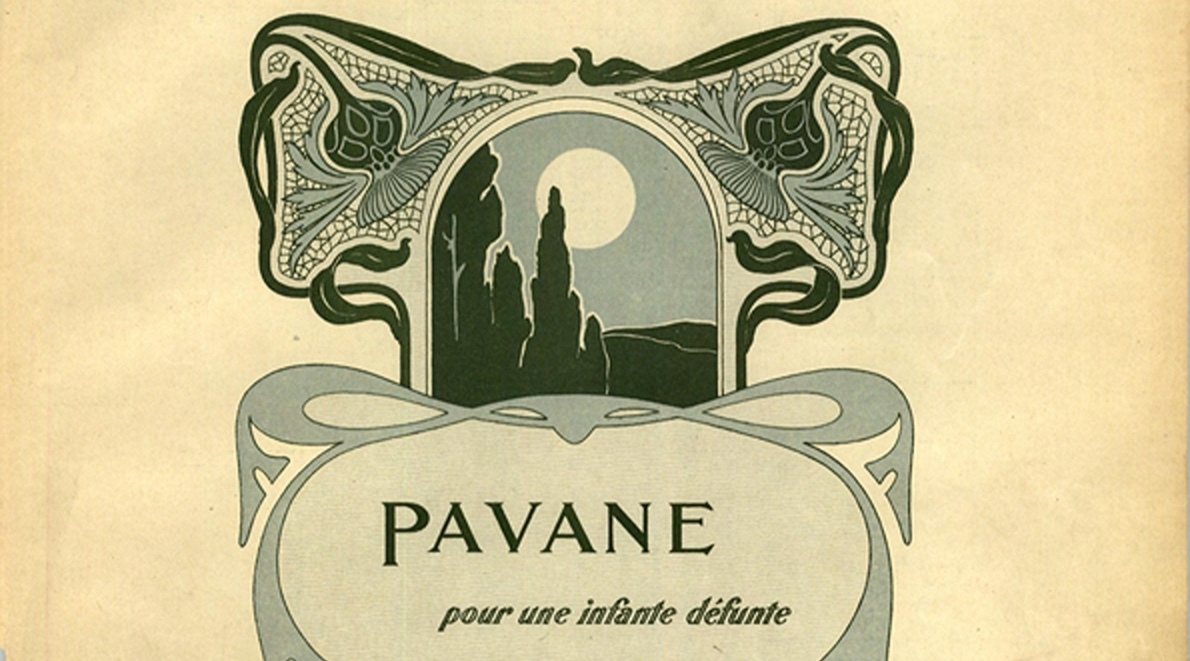A stately, processional dance, the pavane was popular in European courts throughout the Renaissance.
With dreamy nostalgia, Maurice Ravel’s Pavane pour une infante défunte (“Pavane for a Dead Princess”) evokes visions of these distant times. The brief work was composed in 1899 for solo piano, and orchestrated in 1910. Ravel chose the title because he liked the sound of the words. He insisted,
Do not attach any importance to the title. I chose it only for its euphonious qualities [making the un-euphonious English translation, “Pavane for a Dead Princess,” particularly inapt]. Do not dramatize it. It is not a funeral lament for a dead child, but rather an evocation of the pavane [a stately 16th-century Spanish court dance] which could have been danced by such a little princess as painted by Velázquez.
The serene melody glides gracefully over a pizzicato bass line as splashes of color emerge in the harp. The hazy, distant vision emerges through the instrumental voices of the orchestra. In its final orchestrated form, Ravel’s Pavane is at once sensuous, lamenting, and detached.
Recordings
- Ravel: Pavane pour une infante défunte, M. 19a, Robert Trevino, Basque National Orchestra Amazon
Featured Image: cover art for Pavane for a Dead Princess

